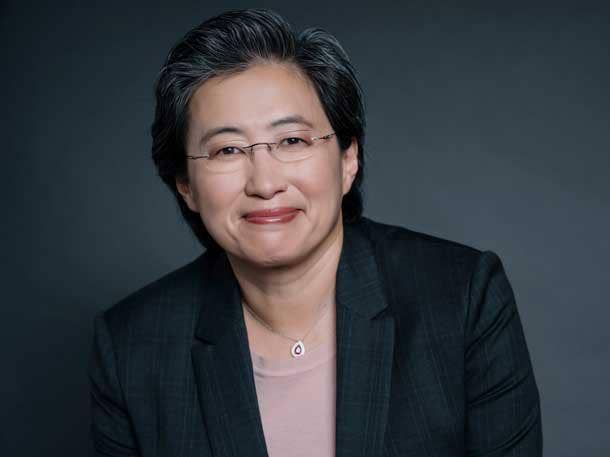AMD CEO Lisa Su: EPYC Sales Grew 50 Percent After Rome's Launch
'Customers are familiar with our platforms and in some cases doing drop-ins with [existing] platforms. They're familiar with our architecture, so I think from a market share standpoint, we feel good about the transition from Naples to Rome,' AMD CEO Lisa Su said of EPYC Rome sales in the third quarter.

AMD CEO Lisa Su said sales of the company's EPYC server processors grew more than 50 percent after the chipmaker launched its new Rome platform in August, contributing to its best quarter for revenue since 2005 and projected double-digit growth for the final three months of the year.
With the momentum for its EPYC processors in the third quarter, ended September 28, Su said the Santa Clara, Calif.-based company is still on track to reach double-digit server CPU share by the middle of next year, underlining the chipmaker's confidence that it can compete with semiconductor giant Intel, which holds the lion’s share of the market.
[Related: Penguin Computing Exec: AMD EPYC Interest At 'All-Time High']
Customers are qualifying second-generation EPYC faster than the first generation, which was code-named Naples, in part because the new products are compatible with Naples' server platform, Su said.
"Customers are familiar with our platforms and in some cases doing drop-ins with [existing] platforms," she said on the company's third-quarter earnings call Tuesday. "They're familiar with our architecture, so I think from a market share standpoint, we feel good about the transition from Naples to Rome."
While the company expressed confidence with EPYC and other new products, investors responded with little enthusiasm as AMD's third-quarter revenue of $1.8 billion, a 9.1 percent year-over-year increase, was $10 million shy of Wall Street's expectations. Net earnings of 18 cents per share were in line with expectations. AMD's after-hours stock movements were hovering between an increase and decrease of less than 1 percent.
AMD's third quarter covered the first few months of sales for the chipmaker's 7-nanometer Ryzen desktop processors, which launched in July, and its 7nm EPYC server processors, which launched a month later in August. The company's first 7nm product, the Radeon Instinct data center GPU, came out a year ago while its first 7nm Radeon consumer GPUs hit the market this year.
Ryzen desktop processors sales drove revenue for AMD's Computing and Graphics segment by 36 percent to $1.28 billion in the third quarter. They also lifted the average selling price for client processors over the last 12 months while mobile processors helped with the sequential increase.
"We saw particularly strong demand for our top-end Ryzen processors and believe we gained client processor unit share for the eighth straight quarter," Su said.
As for mobile processors, the CEO said the number of AMD-based laptops from major OEMs increased 50 percent this year, including new products such as Microsoft's new 15-inch Surface Laptop 3.
EPYC, on the other hand, got its 50 percent boost in unit shipments and revenue from the previous quarter thanks to new EPYC-based servers from Dell, HPE and Lenovo as well as wins from cloud service providers like Amazon Web Services and high-performance computing customers like the U.S. Department of Energy.
Su said while AMD expected cloud sales to drive the most growth for the new EPYC processors, revenue from enterprise customers was stronger than expected.
"The key metric is more top-tier brands adopting EPYC and talking about that publicly," she said, referring to new customers like Twitter and Google.
Meanwhile, the company saw diminishing revenue overall within its Enterprise, Embedded and Semi-Custom segment, with growth from EPYC processors offset by lower semi-custom revenue as Microsoft and Sony see a downturn in console sales as they prepare to launch new versions next year. The segment reported revenue of $525 million, a 27 percent decrease year-over-year.
"We expect semi-custom demand to further soften in the fourth quarter now that both Microsoft and Sony have announced new AMD-powered consoles for holiday 2020," Su said.
The momentum for AMD's new Ryzen, EPYC and Radeon processors prompted the company to forecast $2.1 billion in fourth-quarter revenue, plus or minus $50 million, which would mark a 48 percent increase from the same period last year. The forecast falls in line with analyst expectations.
"We are right where we want to be on our long-term strategic plan," Su said. "We have the strongest product portfolio in our history. We executed our product launches and production ramps very well in the third quarter as our new products drove higher revenue, margin expansion and increased profitability."